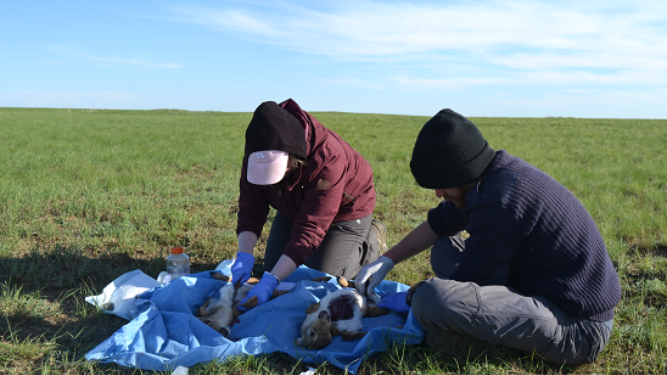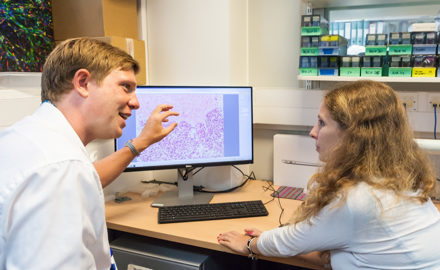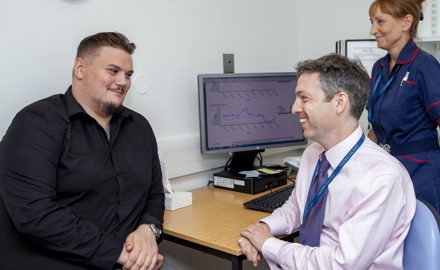Dr Henny Martineau: Trying to save the Saiga
Working as part of a team in collaboration with the Royal Veterinary College, the Kazakh Government and local conservation teams, veterinary pathologist Dr Henny Martineau has been investigating the cause of mass deaths in herds of saiga antelopes.
Saiga are an ancient species of antelope – they’re survivors of the last ice age. Here, Dr Martineau describes her work and the challenge of research in the field.
'Saiga are amazing creatures – they once lived alongside the woolly mammoth. They are perfectly adapted to living in the extremely cold and dusty environment of the steppes of Kazakhstan – a vast region of open grassland.'
In recent decades saiga have undergone dramatic declines in population size, due to overhunting for meat and the illegal trade of saiga horns.

Conservation efforts saw their population increase. However, in 2015 there was a mass mortality event. Adults and calves dropped dead with no or few clinical signs. 200,000 saiga antelopes died in a matter of weeks – 80% of the global population.
'To understand what was happening, we carried out post-mortem examinations on adults and calves in the field. The main findings were multiple haemorrhages in all organs. We identified the same bacteria in many individual antelopes that had died. We know that this bacteria, Pasteurella multocida serotype B, causes blood poisoning in cattle and buffalo. It is thought to live dormant in the tonsils of healthy animals, with a trigger factor leading to bacteria multiplying, spreading round the body and causing death.'
Scientists now think that the bug becomes deadly when unusually hot and wet temperatures coincide with the saiga’s calving.
Pathologists now monitor calving each year so there can be a quick and effective response to disease outbreaks. A team of scientists catches live calves to check their weight and measure them, and carries out post mortems on any carcasses they find.
'There are particular challenges with working in the steppe. It’s very dry and dusty with very little water. We have to carry what we use. We have to cover the area very systematically often walking ten miles recording the living, and dead, saiga. To keep the saiga herds healthy, we need to understand the disease.'
Explore more stories from our Annual Report



